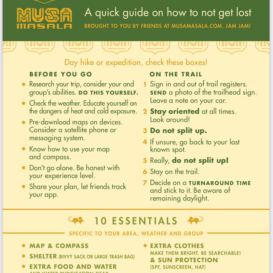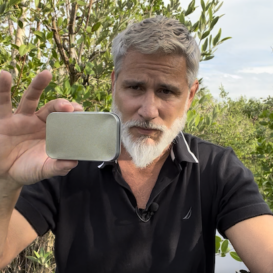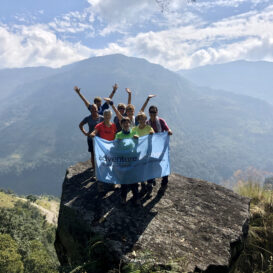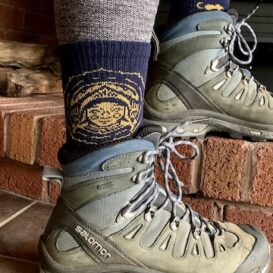Welcome back to Musa Masala’s Good Trekker, Safe Climber series! As we are concerned with all aspects of mountain safety, we are introducing our first post on safe climbing. Here to help show you the ropes is Michael Wu. Mike is an emergency room physician in San Diego, California, an avid climber and a fan of the sport. He enjoys all aspects of climbing, from bouldering to trad wall climbing. Mike volunteered at the Himalayan Rescue Association (HRA) clinic in Manang, Nepal, in 2014. He worked there with Tatiana, aka Dr. Yak. They recently took a climbing trip to Joshua Tree National Park in California. Joshua Tree is an amazing climbing destination and now one of the most visited National Parks in the United States. Thanks, Mike. Jam jam!

I love reading climbing literature. From the history section in the guidebook to Krakauer’s Eiger Dreams and Ilgner’s Rock Warrior’s Way, they motivate me and make me feel more part of the larger climbing community. One series of these books that I often return to is Accidents in North American Climbing, which has been published annually since 1948 by the American Alpine Club and is free for all members. Call it morbid curiosity or a Lemony Snicket for climbers if you wish. For me, Accidents not only reads like a collection of short adventure stories but has consistently provided me with tips and tricks that have changed my practice as a climber. My friends say my habit is akin to reading about shark attacks before going to surf, but I disagree. Shark attacks are really rare and lack any real deterrent, while climbing accidents occur relatively frequently and often are avoidable with some precautions.
So as a climber who is continuously learning and changing, and an avid reader of Accidents, here are a few lessons I’ve learned along the way.
1. Communicate before a climb.
The record of climbing accidents shows that many derive from miscommunication, especially when the climber is at the anchors. While everyone knows the classic call and response routine on the ground, codified by Paul Petzoldt—belay on, on belay, climbing, climb on, etc.—there seems to be fewer standardized communication rules, which has led to a lot of mishaps. Sentences like “The view is beautiful” can quickly sound like “Take me off belay” from a pitch away in howling wind.

2. Always do your pre-climb check.
Missed or incomplete knots and improper belay device use rank high as causes of injury. Once I was climbing regularly, I would sometimes downplay the pre-climb check, trying to act like I was not super nervous, but this led to some close calls that were saved because my belayer was not as interested in how cool I was. As Chris Kalous, climber and host of the podcast Enormocast says, ALWAYS check your knot. It’s not a matter of being cool; it’s more like having to put on your underwear before you pull on your pants. You just have to do it and you have to make sure you don’t have them on backwards.
3. Know a back-up method.
Equipment failure is another favorite in Accidents, especially involving harnesses, ropes and belay device mistakes and failures. Know the proper use of your equipment, their limitations and an alternative method to achieve the same thing before you actually need to use it. The classic example is when “a guy I know” dropped his rappel device five pitches up a climb that shall not be named and had to look up on his smartphone how to get himself down while at a hanging belay. Do yourself a favor and learn the very easy and useful Munter hitch as a rappel backup.
Besides your shoes, the climbing rope is probably the next piece of equipment you’ll need to replace most frequently. Make it a habit to inspect your rope regularly and if there’s any core exposure, soft spots, bulging or flat spots that fail the “pinch test,” cut off that segment or retire the rope. Inspection of your harness is equally important every climbing session, especially the tie-in points, belay loop, webbing, buckle and safety stitches. If there’s any doubt, retire them. There are many ways to be creative with old gear!

4. Rappel with care.
Accident reports of people falling off the ends of the rope on rappel are also common. Another quick and easy knot, the autoblock, tied below the rappel device is the preferred method of a rappel backup (and not the Prusik knot tied above the device). For a more comfortable rappel, you can extend your belay device with locking carabiners and a sling. Hardliners would say that you should use an autoblock and a knot at each end of the rope on every rappel, but practically speaking, I use one whenever I cannot see the rope ends on the ground or when I might use one or both hands mid-descent to mess with rope or gear.
5. Consider hiring a guide.
Know your limits and consider hiring an American Mountain Guides Association certified guide on your next adventure. The standards for qualifications by the AMGA are extremely high. The guides I’ve hired have been great teachers and filled in a lot of gaps in my climbing skills. These hardworking professionals can help fill in such gaps, allowing you to safely explore new climbing regions and learning along the way.

Now get out there, be safe and enjoy!
— Mike Wu














It’s good to be reminded that we should check the knot every time we try outdoor climbing. I think that this is something that everyone should be careful about, no matter how experienced they are. Maybe we should also invest in ropes of good quality in order to avoid possible accidents.
Absolutely Zoe! Indoors or outdoors following a routine is key to rope safety.If you are solid on your routine you are less likely to skip an important check.
We will have more posts coming up on individual safety tips, really breaking down each important step. Thanks for your comment!
Thanks a lot for sharing such a great piece of article! I found it a good helpful write-up with a good sound and explanation. Here I have seen some valuable ideas that are definitely helpful for every rock climbing enthusiast. Please keep sharing more updates!
Hey Fredrick thanks for your comment! We got lucky that when climbing with him in Joshua Tree Mike Wu agreed to do this quick write up. One of the main takeaways really is to watch the repel. We recently had a very experienced friend come off the end of the rope and be very seriously injured. All we could think is that if it happened to him……
So always take that extra moment to go down the mental checklist before you make that move.
We really appreciate you and we will keep sticking to the basics and writing about being healthy outdoors. Jam Jam!!